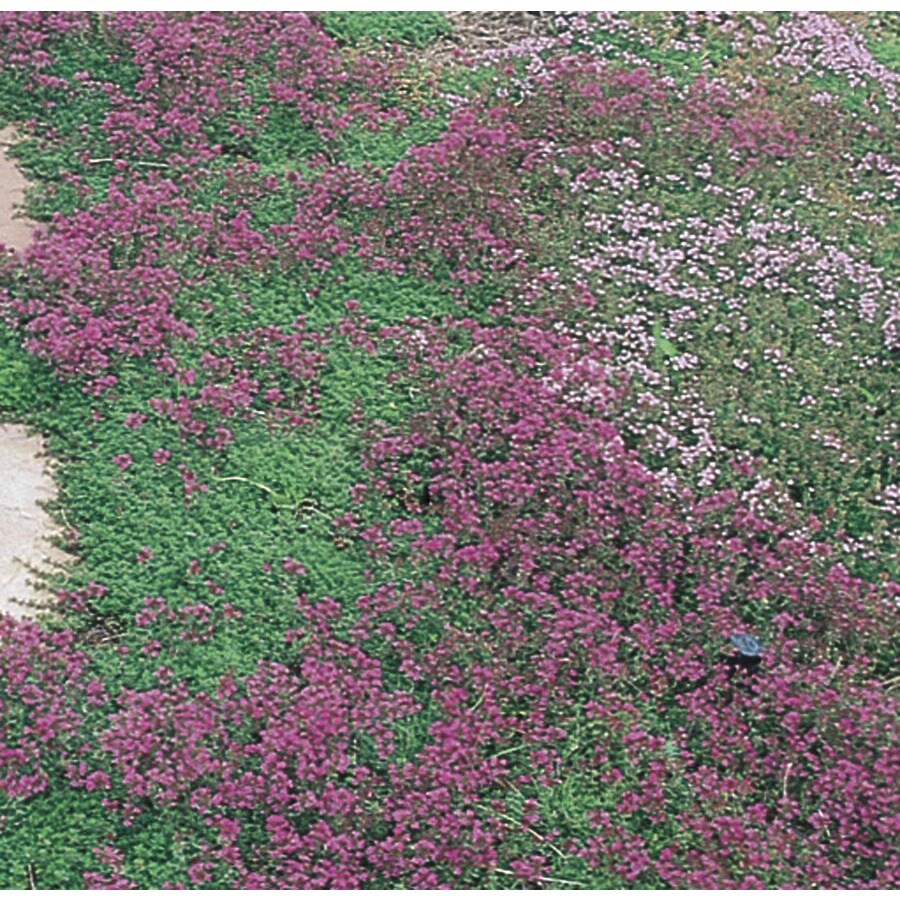

#THYME GROUND COVER DEER FULL#
The toughest part of landscaping with ground covers? Selecting the right ones for your shaded areas - especially if your yard has a mix of spots that receive full sun.

Yellow archangel, sweet woodruff, and Japanese pachysandra spread rapidly to cover the most square footage in the least amount of time. Viburnum (Viburnum spp.) Yaupon Holly (regular and dwarf) (Ilex. What are the fastest-growing ground covers for shade? The lacy shaped silver- white leaves provide a nice contrast to the neighboring flowers. Other ground covers that do well underneath trees include: Dusty Miller is grown mostly as a border plant or used in containers. FAQ About Ground Cover Plants for Shade Which ground covers should I plant under trees?Īny of the plants mentioned here can be planted under trees, since they’re all good ground cover plants for shade.

Spread: Grows at a medium rate via rhizomesĬost: Live plants can cost between $5 and $12. White or pink, feathery blooms in spring. Water as needed to maintain soil moisture prefers partial shade over full shade.įlowering: Yes. Besides the striking flowers, this plant is also loved for its bright green foliage.Įxamples of false goat’s beard cultivars: Bumalda and EtnaĬare: Low maintenance. Depending on the variety, this plant can reach heights of 6 feet, so stick with the smaller types (which grow to around 2 feet tall) for use as a ground cover plant for shade. Pale pink flowers are borne in early summer, however, Woolly Thyme is not as floriferous as the other species. The foliage may take pink tones in cold winters. Just like some people, deer will eat anything when they’re hungry.The white or pink flowers resemble the feathery plumes in hats worn by 17th-century swashbucklers, making false goat’s beard an attractive addition to any shady spot. Primarily used as a ground cover, Thymus pseudolanuginosus (Woolly Thyme) is a creeping, mat-forming sub-shrub forming a dense cushion of small, dark green leaves usually covered with long hairs. Ruth is careful to remind gardeners that no plant is really deer proof. The descriptions are accompanied by full-color photography by Alan L.
#THYME GROUND COVER DEER HOW TO#
I like Ruth’s approach to her book because she helps gardeners understand deer behavior before describing the deer-resistant plants and how to use them in the landscape.

The deer-resistant herbs with these high ratings include basil, Greek oregano, rosemary, sage, and thyme.ĭeer keep their distance from these delicious herbs because of the plant’s strong-smelling essential oils or the foliage’s intense aroma. The scale ranges from deer sometimes nip off flowers, but leave the foliage alone to deer avoid the plant altogether. Instead of fences, sprays, or repellents, she recommends creating gardens with deer-resistant plants.Īs soon as I received a complimentary review copy of “50 Beautiful Deer-Resistant Plants: The Prettiest Annuals, Perennials, Bulbs, and Shrubs that Deer Don’t Eat” ( Timber Press, $19.95), I thumbed through it and was pleased to see such a wide range of lovely plants that deer won’t eat.Įven though the majority of the book covers ornamentals, Ruth also has a chapter of culinary herbs she rates from 7 to 10 on her deer resistance rating scale. As an expert plantswoman, award-winning garden writer, and former horticulture editor for Country Living Gardener magazine, she has a unique perspective for keeping deer out of gardens. In her new book, Ruth Rogers Clausen has catalogued 50 plants with features that aren’t appetizing to deer. Another way is to choose plants that deer don’t like to eat. Physical barriers, like 10-foot-tall fences, are one way to keep deer out of the garden. One of my friends lives in the mountains and assures me her 16,000 square feet of deer-fenced gardens are the only way to grow. Creeping thyme doesnt need mowing, helps to suppress weeds, and requires very little care. Planted in the spring and watered through the growing season, the established plants continue to spread year after year. It seems the squirrels always know which tree is my favorite or which tomatoes I’m looking forward to eating.Įven though no deer stop by to browse in my suburban backyard, I understand how frustrating it can be to have deer as regular diners. Use creeping thyme as scented, soft carpets for garden paths, or as fillers between pavers or stepping stones. I enjoy attracting all kinds of wildlife to my backyard, until they start to take advantage of my good nature.


 0 kommentar(er)
0 kommentar(er)
